Contact Us. Web site contents copyrighted. All rights reserved. Made With Serif WebPlus. Home

Blue Door Flat Mechanical/Manual Juniper Treatment
BLM Alturas Field Office, April 2013
The Blue Door Flat Juniper Treatment project has been in progress for about two years. It proposes to remove non old growth juniper from 2,131 acres of public land for the purpose of sage-grouse habitat improvement and ecosystem restoration. The cut juniper will then be chipped and used in biomass energy plants.
The Environmental Assessment, Revised: February 3, 2010, lists five areas of Mitigation to the Environmental Consequences of the Blue Door Flat project. (1) Cutting area boundaries will be irregular to prevent the “clear cut” look. (2) Where old growth is sparse, scattered small groves of junipers will be left for visual resource management and wildlife values. (3) At the base of rims where only juniper is present, leave 25 feet to a maximum 100 feet of uncut juniper for visual resource management and wildlife values. (4) Leave large rocky plateaus with old growth and sparse young juniper intact. (5) Leave single or multiple trees intact that are within rock piles.
The Decision Record, dated February 3, 2010, states on page 2 that “All leave areas will be identified, flagged and GPSed by BLM by April 30, 2010.”
The boundary of the project was irregular and flagged. The project contains many rocky rims and plateaus. However, we found only one rocky rim flagged in the entire project. On the rim that was flagged, all of the mitigation listed above were followed exactly as written in the environmental assessment,(EA). This flagged rim was the only area we found in the project where the mitigation was followed as written in the EA.
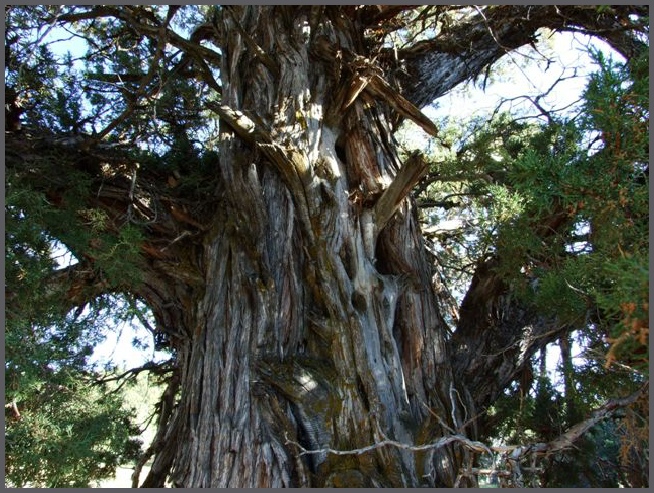
An old juniper on the eastern edge of the project.
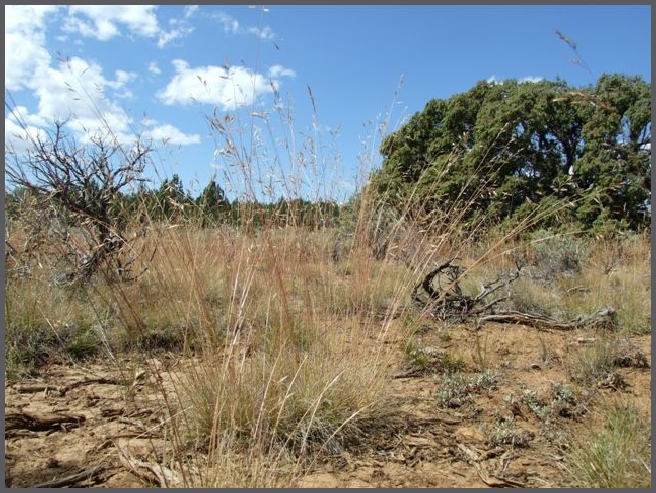
Native bunch grasses were in very good shape before the project was implemented.
We visited the Blue Door Flat juniper removal project on March 30, April 18, and April 22, 2013. We wanted to see how well the BLM has been adhering to the mitigation measures they listed in the environmental assessment of February 3, 2010. We were only able to observe approximately 20% of the project on these three days. All five area types mentioned in the mitigation list: rocky rims, old growth juniper woodlands, rock piles, cutting boundaries, and rocky plateaus were within the 20% of the project that we observed. As the images below show, the BLM is not doing a good job of following through with the implementation plan as it is written.
Satellite images and topographic maps indicate that there are other areas in the project similar to the 20% we observed. Historically, this project area was not used by wood cutters of any kind. The old growth woodlands were untouched before this project was implemented. These old woodlands are not untouched anymore.
On a 19 acre rocky plateau with only old growth and no young juniper, we found 62 old growth that had been selectively cut down while other old growth in the same old community were left standing. Their ages ranged from about 160 years up to about 290 years. This rocky plateau was not flagged off limits by the BLM before implementation. There are many similar rocky plateaus on this project which are also likely compromised because of not being flagged. A Gallery of the old juniper cut on these 19 acres can be found here.
There are clear cuts with lengths up to a half mile with not one small group of young juniper left for VRM and wildlife uses. Bases of rims have been cleared of juniper and old growth juniper woodlands with sparse or no young juniper were not left intact.
The inspections by the BLM every two weeks during the project failed to identify any of the above failures by the contractors to follow the mitigation in the EA and Decision Record.
When the BLM does not follow through with flagging off “leave” areas and lets the contractor decide what trees and which areas to cut, this is what happens on our public lands. From the contractor’s point of view, if there is no flagging around an area then the BLM expects them to cut something there. And the old growth juniper continues to be unnecessarily cut on public lands.
Rocky plateaus with old growth juniper and sparse or no young juniper were not always left intact as required by the environmental assessment.
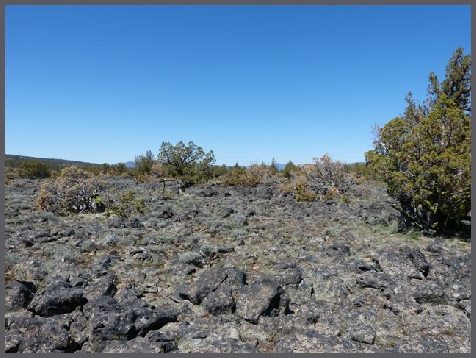
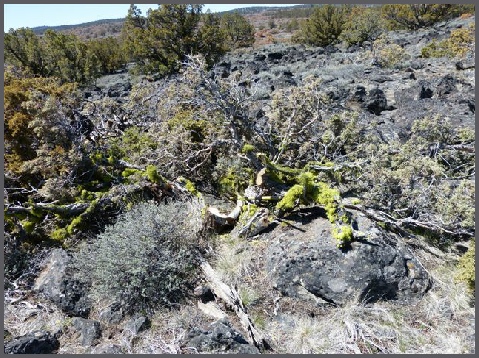
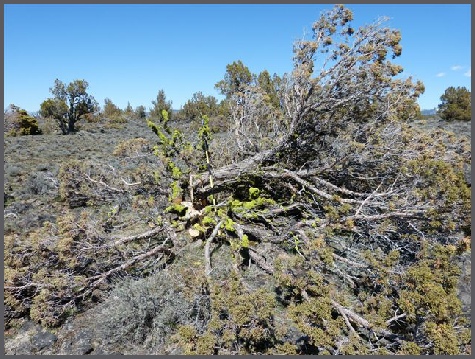
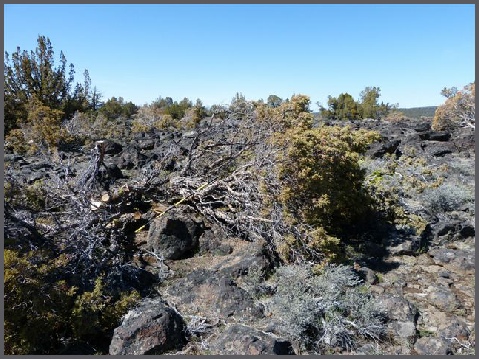
The EA states: “At the base of rims where only juniper is present, leave 25 feet to a maximum 100 feet of uncut juniper for visual resource management and wildlife values.” This mitigation was not followed consistently throughout the project. Results varied from contractor to contractor as the photos below show.
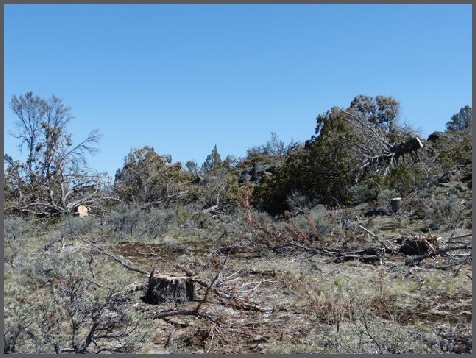
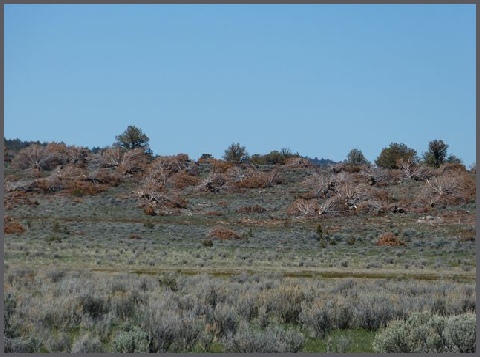
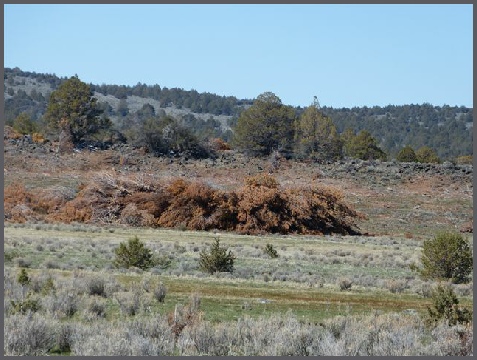
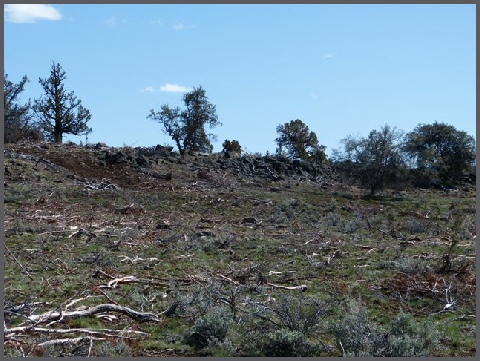
Bottom line: The environmental assessment (EA) was well thought out and written. The EA protected individual old growth juniper as well as old juniper woodlands on rocky plateaus. There was mitigation written in the EA protecting visual resources (VRM) and wildlife uses regarding rims, aspen, small groves of young juniper and steps to avoid “clear cuts”. The Decision Record stated that the BLM would flag off all “leave areas” from the EA.
However, the best intentions are worthless when the follow through is minimal before implementation. If the BLM had flagged all “leave areas” there is a very high probability the various contractors would have honored the flagged boundaries of the “leave areas” as they did with the flagged exterior boundaries of the project as a whole. The final results for this project would have been much different.
Old growth juniper was cut on the Blue Door Flat Project.
The measuring stick has six inch increments.
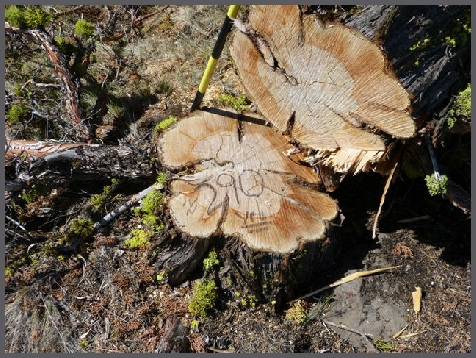
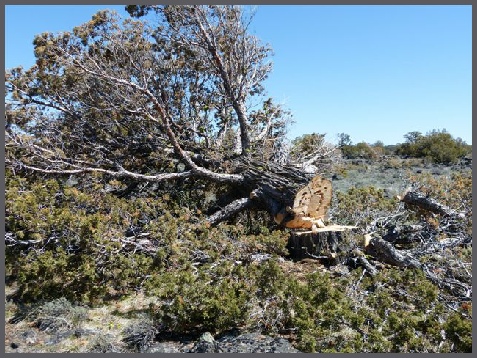
The images above are of just two of the more than 62 old growth juniper that were cut on 19 acres of the Blue Door Flat BLM project. A gallery of more of the old growth cut in this area can be found here.
The two pictures above are of the same very old juniper. If you click on the left photo to enlarge it, you will see the measuring stick standing up through the cut large limb on the right. We found several old trees on this project that were just mutilated as was this one.
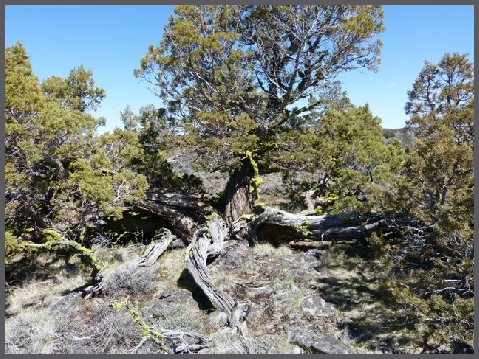
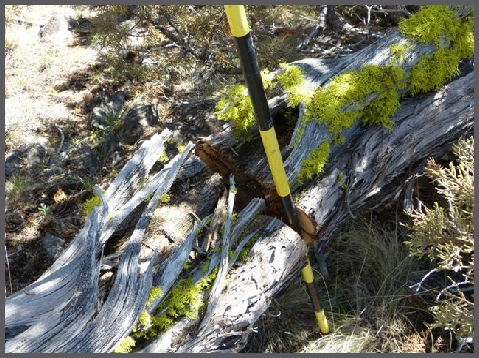
The EA states: “Where old growth juniper is sparse, scattered small groves of junipers will be left for visual resource management and wildlife values.” This mitigation was followed in some areas but not in other areas as the following images show.
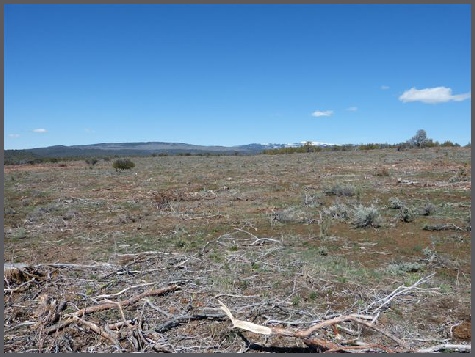
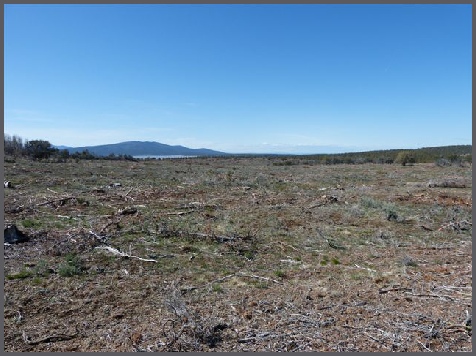
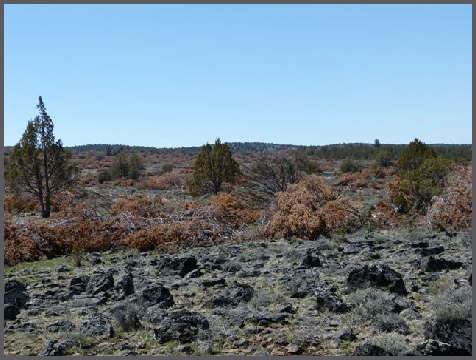

These two images show a different interpretation of the EA by a different contractor. There were at least three different contractors on this project. Flagging by the BLM before the cutting began would have bunched the young juniper that were to be left into “small groves” instead of leaving the scattered young trees shown in the photos above.
These two images show clear cuts of about half a mile in length each without one “small grove” of juniper left anywhere.
All of the trees shown cut in these four images are old growth juniper, part of a formerly untouched old juniper woodland. These cut trees will not be taken away because of the very rocky area.
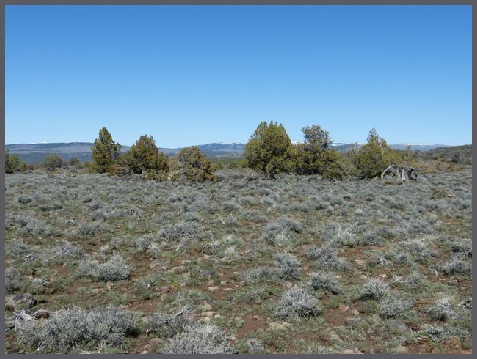
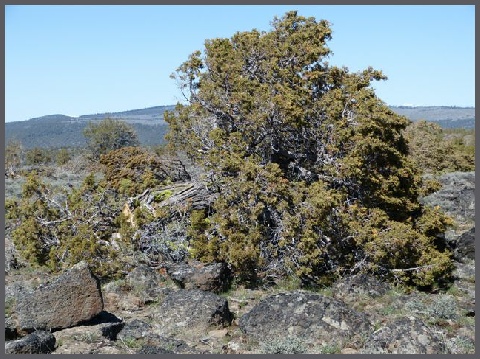
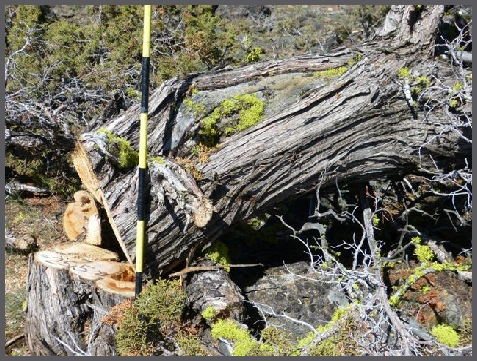
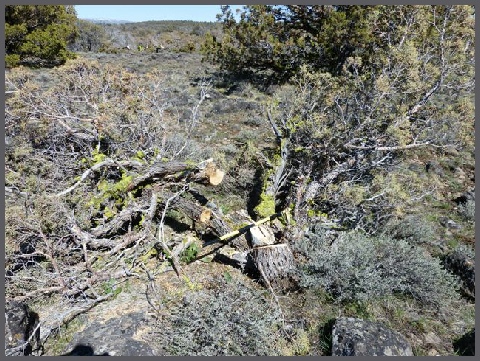
The four photos above show a small group of old juniper in a rock pile. Two of the old trees were cut down. One large old growth juniper of about 255 years and a small multi-trunk old growth.